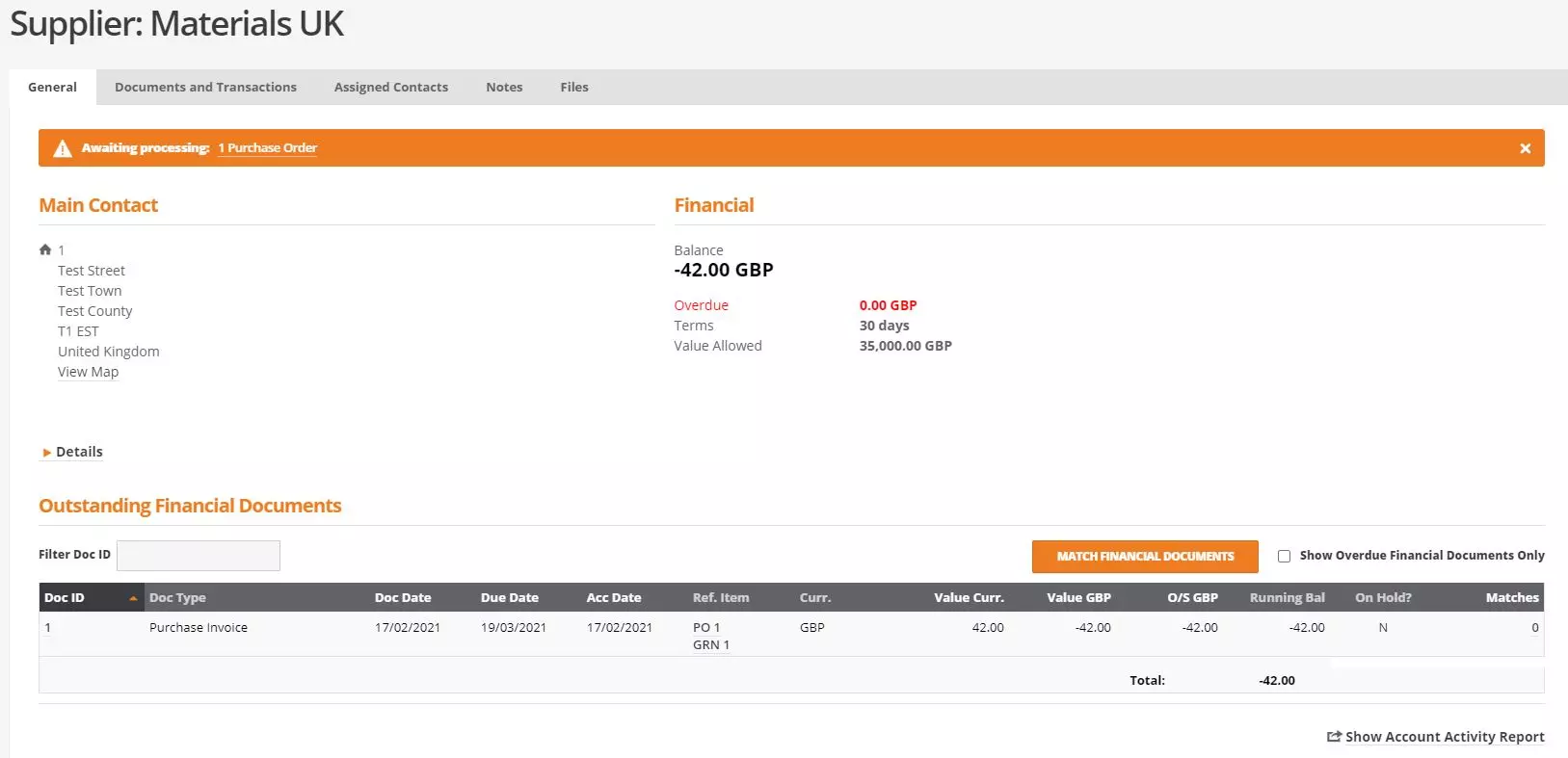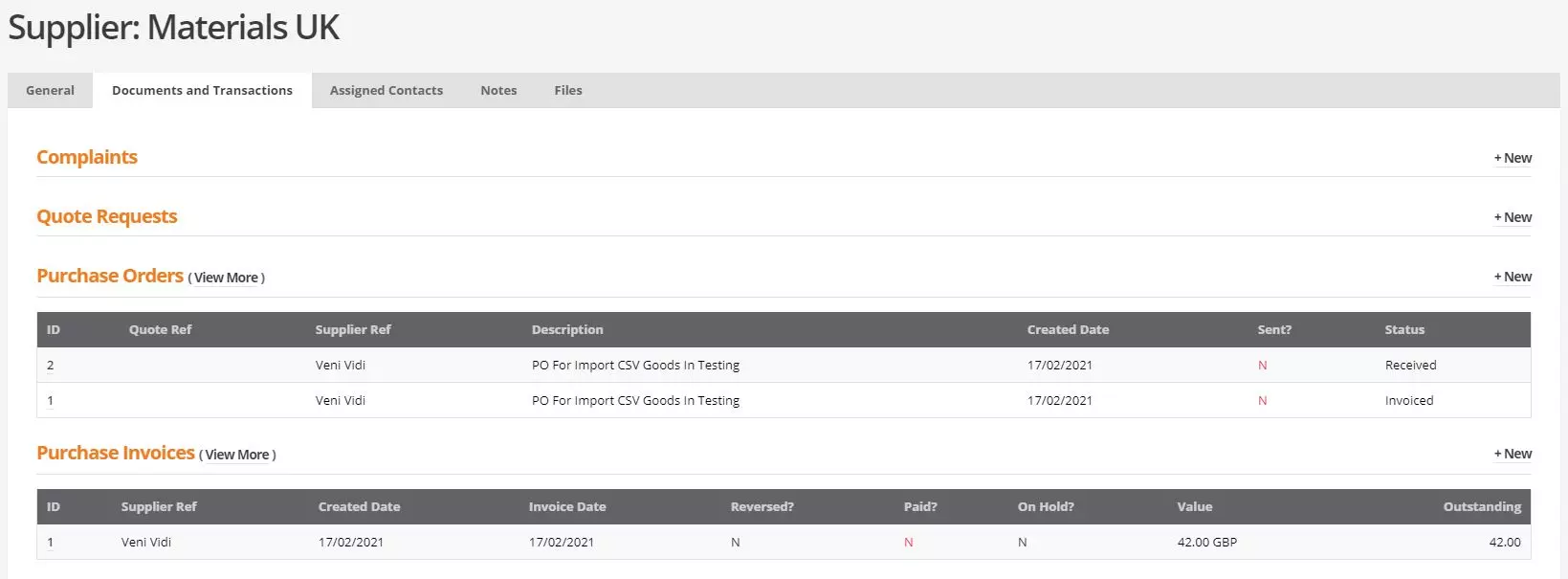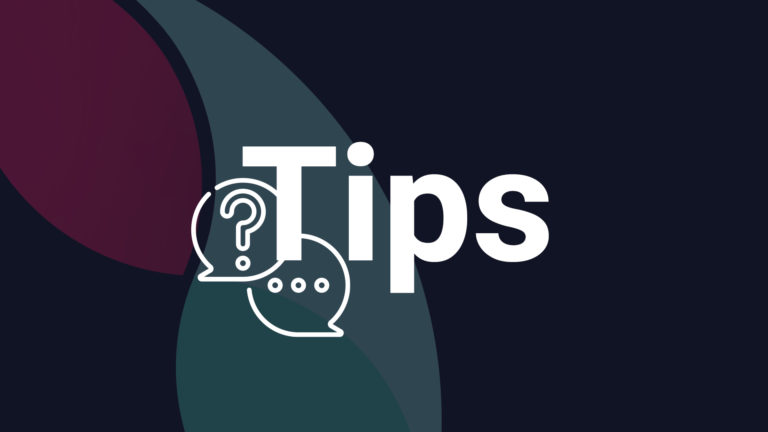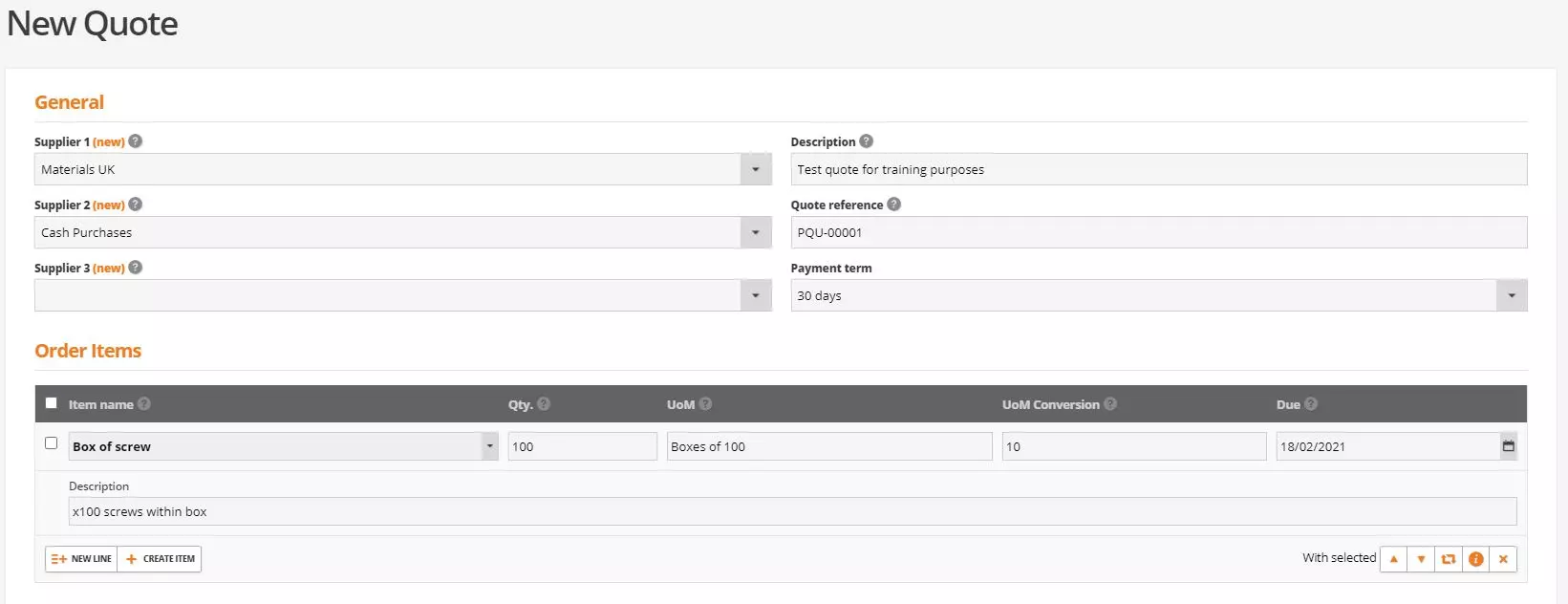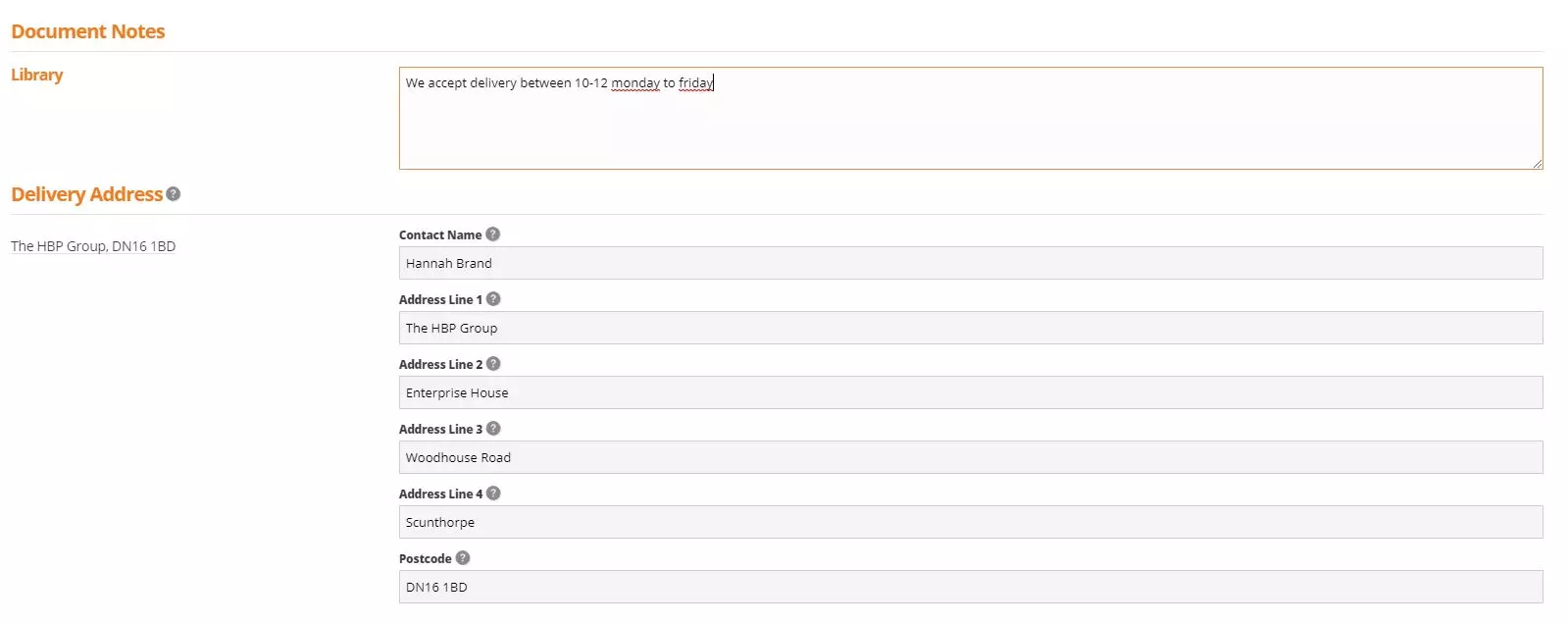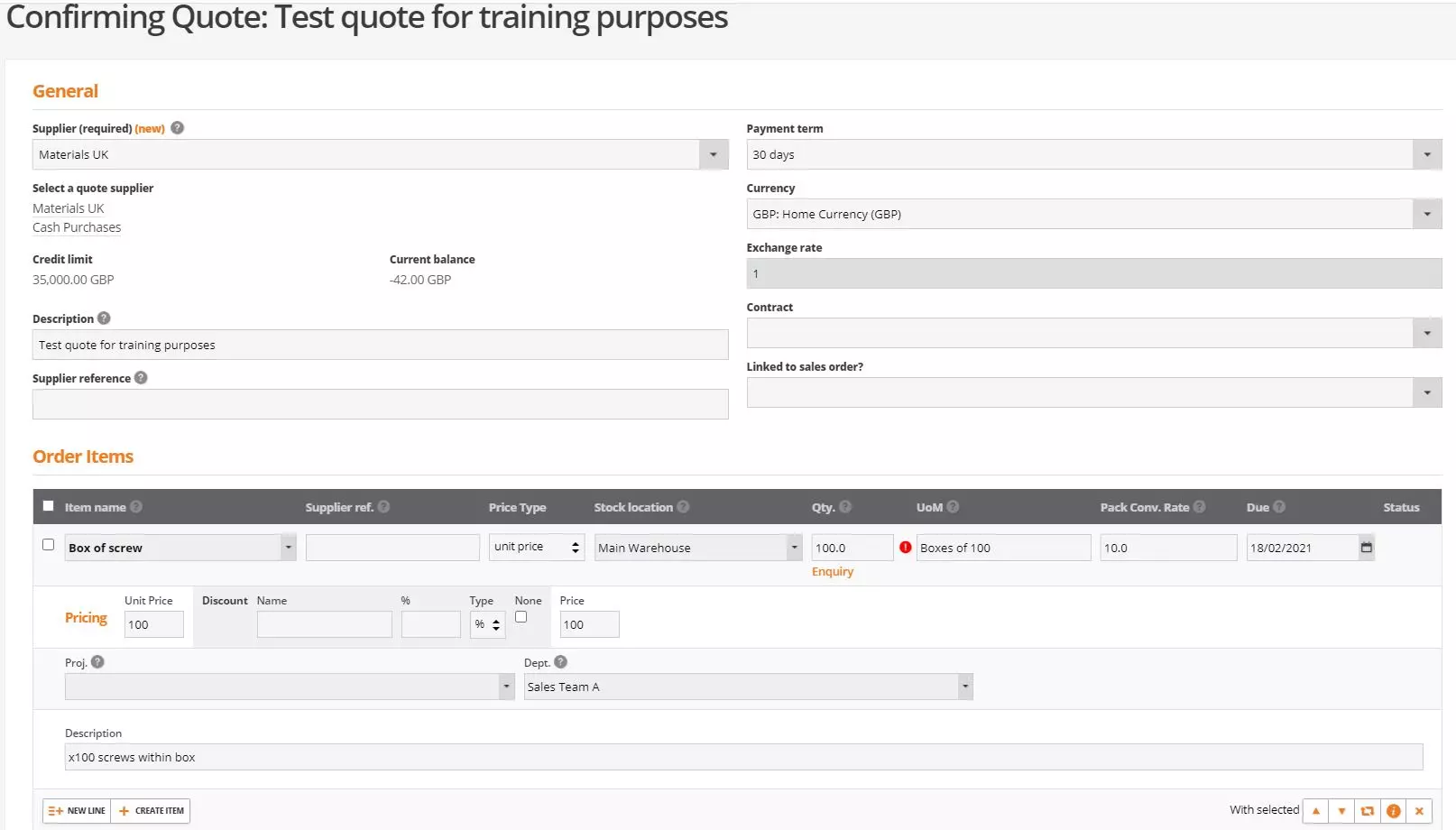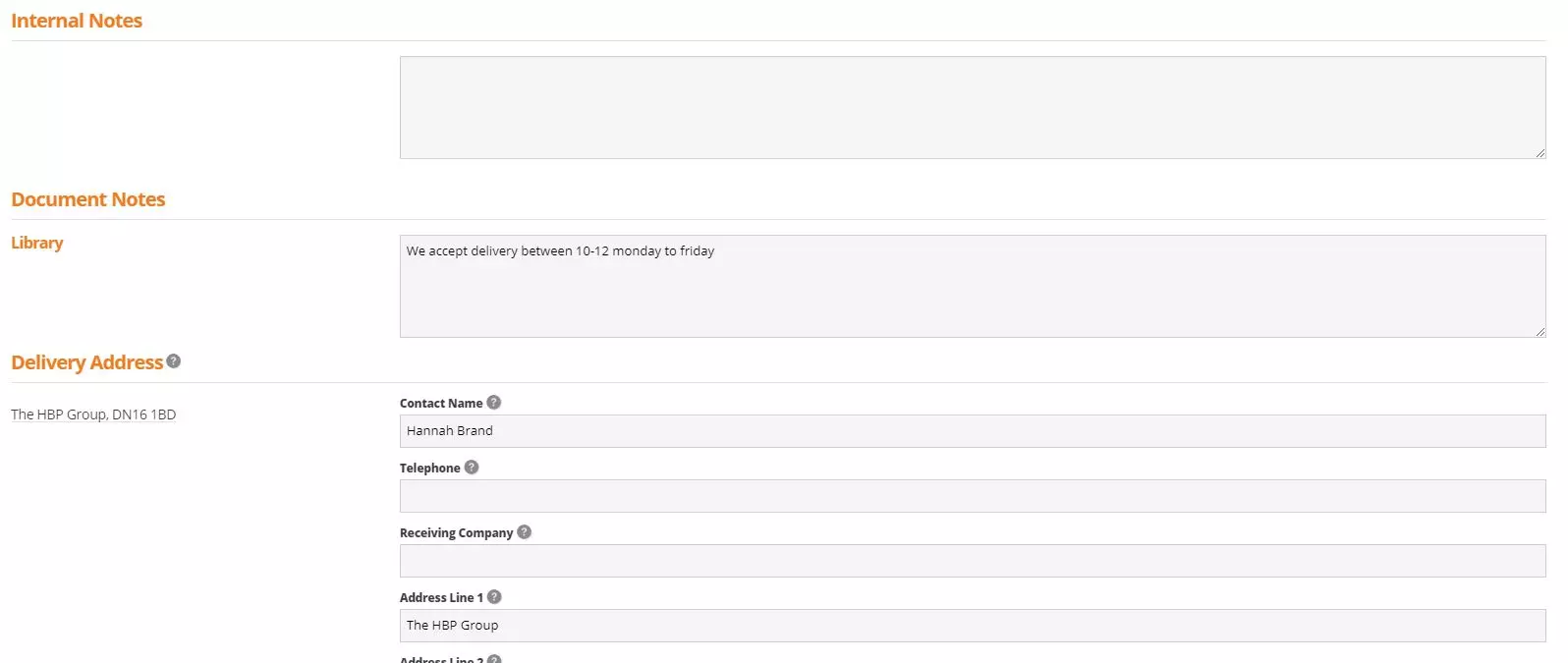Chapter 3: Supplier Accounts & Purchasing
Supplier Account Records
Navigate to supplier > Supplier Accounts
All active suppliers accounts will display on the supplier accounts screen. The search and advanced search filters can be used to reduce the number of accounts showing in the results table. As a quick overview, users can see the account name, code, balance, postcode, and main contact information.
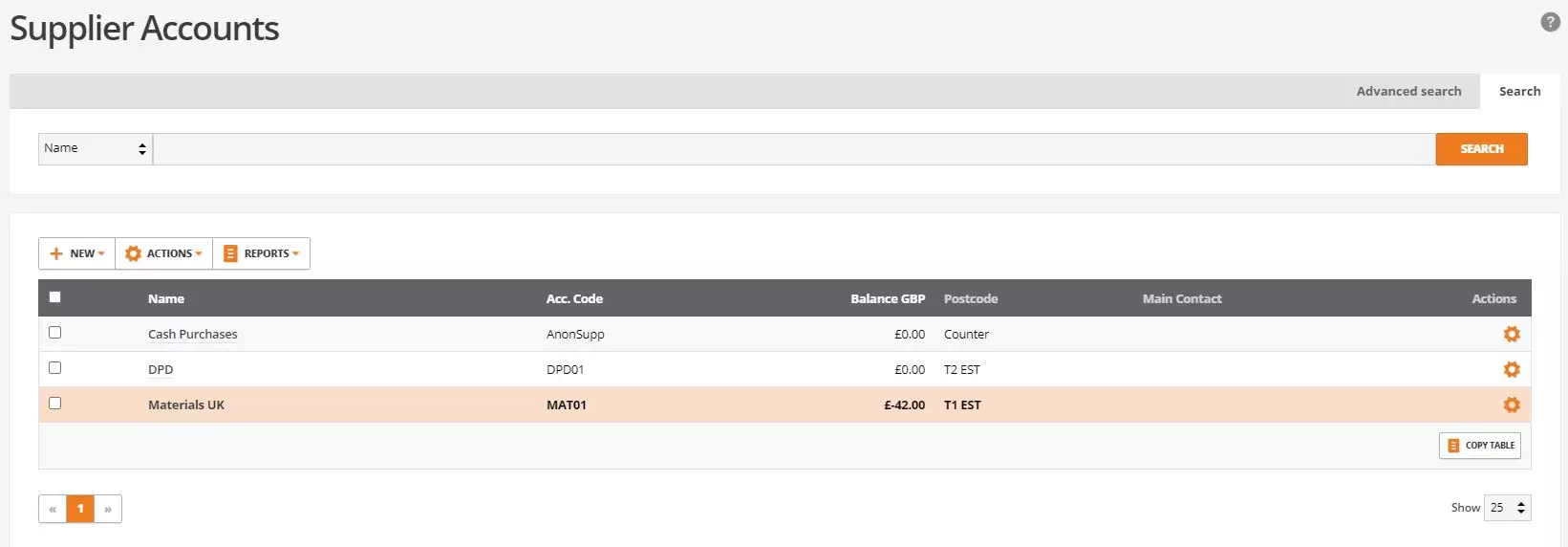
To view further information about the account, users can select actions then select show. This will display the account record. Across the top of the record there are 5 tabs – General, Documents and Transactions, Assigned Contacts, Notes and files. For simplicity, the general tab shows the main contact details along with a financial overview of the account followed by a breakdown of outstanding documents such as invoices, credit, payments, and receipts.
Under the documents and transactions tab users will find all historical records and transactions created for the selected account including complaints, quotes, orders, invoices, payments, etc. Further information regarding the historical data can be view selecting the ID number and new records can also be created from this screen select +new next to the relevant heading.
The assigned contacts tab will display all current contacts from the CRM module that are assigned to the main account. New contacts can be created selected the +new option in the top right of the screen. As standard, only the contact name, job title, mobile number and email will display however more information can be accessed by selecting the contact name which will open the contact record.
Under the notes tab users will see all pre-recorded notes against the account in date order, this will show the date created, title, notes and the user who created it. New notes can be added to the record selecting +note at the top of the screen. Notes should be added to accounts to record any actions that have taken place such as credit limit increases, amendments to account setting, calls, emails etc.
The files tab will display a list of files that have been stored against the account and new files can be uploaded by browsing to the file and selecting upload. To use the ‘files’ feature your Business Cloud system must have a drop box account linked in the system settings.


